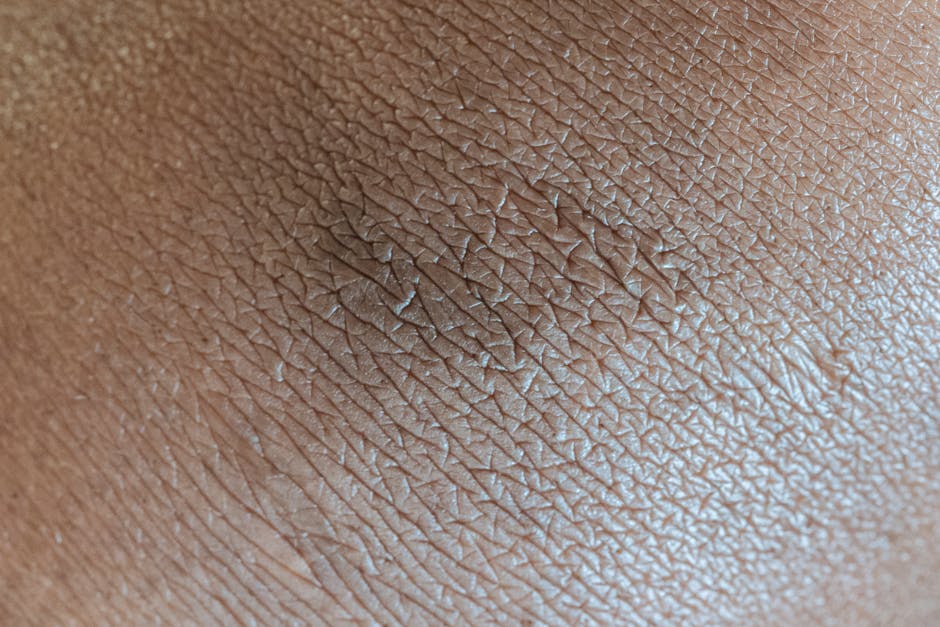Get Your AI Analysis
Personalized skincare insights
Discover your perfect skincare routine with our AI-powered analysis. Get personalized recommendations for glowing, healthy skin.
Start AnalysisFollow Us
Stay updated with the latest skincare tips, trends, and expert advice.
Ceramides and Hyaluronic Acid: Rebuilding Dry Skin Barriers
As a skincare veteran with over a decade immersed in the ever-evolving world of dermatology and beauty, I’ve seen countless ingredients rise and fall. But very few possess the foundational, transformative power of ceramides and hyaluronic acid. If you've been battling persistent dryness, redness, or sensitivity, chances are your skin barrier is compromised. Today, we're diving deep into these powerhouse molecules, unraveling the science behind their magic, and equipping you with the knowledge to rebuild your skin’s defense system from the ground up.
Imagine your skin barrier as a meticulously constructed brick wall: the bricks are your skin cells (corneocytes), and the mortar holding them together is a complex lipid matrix. When this mortar weakens, gaps appear, leading to moisture loss and increased vulnerability to external aggressors. This isn't just a cosmetic concern; a compromised barrier can lead to various skin conditions and discomfort. Let's fix it.

Understanding Your Skin Barrier: The Foundation of Skin Health
The outermost layer of your skin, the stratum corneum, is your primary shield against the world. It regulates what enters and exits your body, playing a crucial role in maintaining hydration and protecting against irritants, allergens, and pathogens. When this barrier is damaged, it manifests as:
- Persistent Dryness and Flakiness: Skin feels tight and rough, even after moisturizing.
- Increased Sensitivity: Products that once worked fine now sting or cause irritation.
- Redness and Inflammation: Skin becomes easily irritated and inflamed.
- Itchiness and Discomfort: A common symptom of a disrupted barrier, signaling nerve irritation.
- Dull or Lackluster Complexion: Impaired barrier function can affect light reflection, making skin appear less radiant.
- Breakouts: Yes, a damaged barrier can actually contribute to acne by allowing bacteria to penetrate more easily and disrupting the skin's natural microbiome.
Research published in the Journal of Clinical and Aesthetic Dermatology highlights that a compromised skin barrier is a key factor in conditions like eczema, psoriasis, and even general skin aging. Restoring its integrity is paramount for a healthy, resilient complexion.
The Power of Ceramides: The Skin's Natural Mortar
Ceramides are a family of waxy lipid molecules — naturally occurring fats — that make up over 50% of your skin's composition. Think of them as the essential "mortar" between your skin cells, forming a protective, water-impermeable layer. There are nine primary types of ceramides (Ceramide 1, 2, 3, etc.), and a healthy skin barrier contains a balanced mix of them all.
Their primary role is to prevent Transepidermal Water Loss (TEWL). This fancy term simply means water evaporating from your skin's surface. When ceramide levels are low, TEWL skyrockets, leading to dehydration, dryness, and a weakened defense. Replenishing ceramides topically helps to literally patch up these gaps, reinforcing the barrier, improving hydration, and protecting against environmental stressors. A study in the British Journal of Dermatology found that individuals with dry skin or eczema often have significantly lower ceramide levels in their stratum corneum.
Optimal Ceramide Concentrations & Combinations
For effective barrier repair, look for products containing a blend of different ceramide types. This ensures a more comprehensive rebuilding process. Optimal concentrations typically range from 0.1% to 1% for individual ceramides, or a total ceramide complex of up to 3-5%. Often, they are formulated with cholesterol and fatty acids – other crucial lipids – in a specific ratio (often 3:1:1 for ceramides, cholesterol, and fatty acids) to mimic the skin's natural lipid composition, making them even more effective.
"Ceramides are non-negotiable for anyone looking to repair or maintain a healthy skin barrier. They are the scaffolding that holds your skin together, essential for both protection and hydration. For true efficacy, I always recommend formulations that include a blend of ceramides 1, 3, and 6-II, often with cholesterol and fatty acids, as this best replicates the skin's natural lipid structure."
— Dr. Evelyn Reed, Board-Certified Dermatologist

Product Recommendations for Ceramides:
- CeraVe Moisturizing Cream: A classic for a reason, this non-comedogenic cream contains a blend of three essential ceramides (1, 3, 6-II) and hyaluronic acid, delivered through MVE Technology for 24-hour hydration.
- Paula's Choice Clinical Ceramide-Enriched Firming Moisturizer: This advanced formula features five ceramides, retinol, and vitamin C for barrier repair plus anti-aging benefits.
- Skinfix Barrier+ Triple Lipid-Peptide Cream: Designed with a patented Triple Lipid Complex (lipids, peptides, and humectants) that helps restore lipids and ceramides to nourish skin and visibly reduce redness.
- Dr. Jart+ Ceramidin Cream: Formulated with 5-Cera Complex, this rich cream strengthens the skin barrier and provides intense moisture.
The Magic of Hyaluronic Acid: The Ultimate Hydrator
While ceramides reinforce the structure, hyaluronic acid (HA) is the queen of hydration. It's a powerful humectant, meaning it attracts and holds onto water molecules. Naturally found in our skin, HA acts like a sponge, drawing moisture from the air and deeper layers of the skin to the surface, plumping it up and reducing the appearance of fine lines and wrinkles. A single molecule of hyaluronic acid can hold up to 1,000 times its weight in water!
When your skin barrier is compromised, it struggles to retain water. HA steps in as an immediate relief, providing a surge of hydration that helps to alleviate tightness and discomfort. By keeping the skin plump and moist, it creates an optimal environment for the skin barrier to heal and rebuild. A review published in the International Journal of Biological Macromolecules emphasized HA's critical role in skin hydration, wound healing, and tissue repair.
Forms and Molecular Weights of Hyaluronic Acid
Not all hyaluronic acid is created equal. It comes in different molecular weights, each offering unique benefits:
- High-Molecular Weight HA: Sits on the skin's surface, forming a hydrating film that prevents water loss and provides immediate plumping.
- Low-Molecular Weight HA (Hydrolyzed HA, Sodium Acetylated Hyaluronate): Penetrates deeper into the skin to provide more profound, long-lasting hydration and potentially stimulate the skin's own HA production.
- Sodium Hyaluronate: A salt form of HA, known for its smaller molecular size, allowing for better penetration than pure high-molecular weight HA. It's often found in many formulations.
Many effective HA serums contain a blend of these molecular weights for multi-depth hydration.
"Hyaluronic acid is an indispensable humectant, especially for dry and barrier-compromised skin. It provides instant relief and deep hydration, which is crucial for cellular function and optimal healing. While it doesn't 'repair' the barrier in the same structural way ceramides do, it creates the ideal hydrated environment for the barrier to function and rebuild itself."
— Dr. Julianna Lee, Cosmetic Chemist and Skincare Formulator

Product Recommendations for Hyaluronic Acid:
- The Ordinary Hyaluronic Acid 2% + B5: A budget-friendly option with multi-molecular HA and Vitamin B5 to enhance surface hydration.
- SkinCeuticals H.A. Intensifier: A powerful serum that not only delivers hyaluronic acid but also promotes the skin's own HA production, combined with proxylane and botanical extracts.
- La Roche-Posay Hyalu B5 Pure Hyaluronic Acid Serum: Features pure hyaluronic acid, Vitamin B5, and madecassoside to plump and repair skin.
- Vichy Minéral 89 Hyaluronic Acid Face Serum: A lightweight gel booster with 89% Vichy Volcanic Water and natural origin HA to hydrate and protect the skin from environmental aggressors.
The Dynamic Duo: Ceramides and Hyaluronic Acid Together
This is where the magic truly happens. While ceramides work to rebuild the physical structure of your skin barrier, hyaluronic acid ensures that barrier remains well-hydrated and supple. They are not interchangeable but rather synergistic. Ceramides seal in the hydration that HA brings to the skin, creating a robust, resilient, and deeply moisturized barrier. This dual action is the most effective approach to tackling dry, compromised skin.
Combining these two ingredients means you’re addressing both aspects of barrier repair: preventing water loss (ceramides) and ensuring abundant water is available to be retained (hyaluronic acid). This strategy not only repairs existing damage but also fortifies the skin against future environmental insults.
Optimal Layering Techniques for Maximum Efficacy
When combining these powerful ingredients, the order of application matters. General rule of thumb: apply from thinnest to thickest consistency, and humectants (like HA) usually go on before occlusives (which ceramides often are part of, in a cream).
- Step 1: Cleanse Gently: Use a mild, hydrating cleanser. Avoid harsh foaming agents that strip the skin.
- Step 2: Apply Hyaluronic Acid Serum: On damp skin, apply your HA serum. Applying HA to damp skin helps it pull in that extra moisture, optimizing its hydrating capabilities.
- Step 3: Lock in with Ceramides: Follow immediately with a ceramide-rich moisturizer or cream. This creates a protective seal, trapping the HA's hydration and strengthening the skin barrier with essential lipids.
- Step 4 (Morning Only): Sun Protection: Always finish your morning routine with a broad-spectrum SPF 30+ to protect your newly strengthened barrier from UV damage.
"For true barrier recovery, you need both the structural support of ceramides and the hydrating power of hyaluronic acid. HA draws moisture into the skin, while ceramides ensure that moisture stays put, preventing evaporation and reinforcing the skin's natural defenses. It's a complete approach to healing."
— Michelle Wong, Science Communicator and Skincare Educator
Crafting Your Barrier Repair Routine
Consistency is key when it comes to barrier repair. Here's a simple, effective routine:
Morning Routine:
- Cleanse: Use a gentle, hydrating cleanser (e.g., Vanicream Gentle Facial Cleanser).
- Hydrate: Apply a hyaluronic acid serum to damp skin (e.g., La Roche-Posay Hyalu B5 Serum).
- Moisturize & Protect: Follow with a ceramide-rich moisturizer (e.g., CeraVe Moisturizing Cream) and then a broad-spectrum SPF 30+ sunscreen.
Evening Routine:
- Double Cleanse (if needed): If wearing makeup/SPF, start with an oil or balm cleanser, then follow with your gentle hydrating cleanser.
- Hydrate: Apply hyaluronic acid serum to damp skin.
- Repair & Nourish: Apply a generous layer of your ceramide-rich moisturizer or a dedicated barrier repair cream (e.g., Skinfix Barrier+ Triple Lipid-Peptide Cream). Consider layering with a facial oil if your skin is extremely dry.

General Tips for Barrier Health:
- Avoid Over-Exfoliation: Limit harsh physical scrubs and high concentrations of chemical exfoliants (AHAs/BHAs) until your barrier has healed. When you do reintroduce them, do so slowly.
- Lukewarm Water: Hot showers and facial cleansing can strip natural oils.
- Patch Test New Products: Especially important for sensitive or compromised skin.
- Simplify Your Routine: Less is often more when your barrier is struggling. Focus on essentials.
Beyond Topicals: Lifestyle for Barrier Health
While topical ingredients are powerful, holistic health plays an undeniable role. Ensure you're hydrating from within by drinking plenty of water. A balanced diet rich in essential fatty acids (from foods like salmon, avocados, and nuts) can support skin health. Protect your skin from harsh environmental conditions like extreme cold, wind, and low humidity, which can exacerbate barrier damage. Managing stress and ensuring adequate sleep also contribute to overall skin resilience.
Rebuilding a compromised skin barrier is a journey, not a sprint. It requires patience, consistency, and the right ingredients. By understanding the distinct yet complementary roles of ceramides and hyaluronic acid, you're now equipped to restore your skin's natural defenses, leading to a healthier, happier, and more radiant complexion. Embrace this powerful duo and say goodbye to dry, sensitive skin for good.

